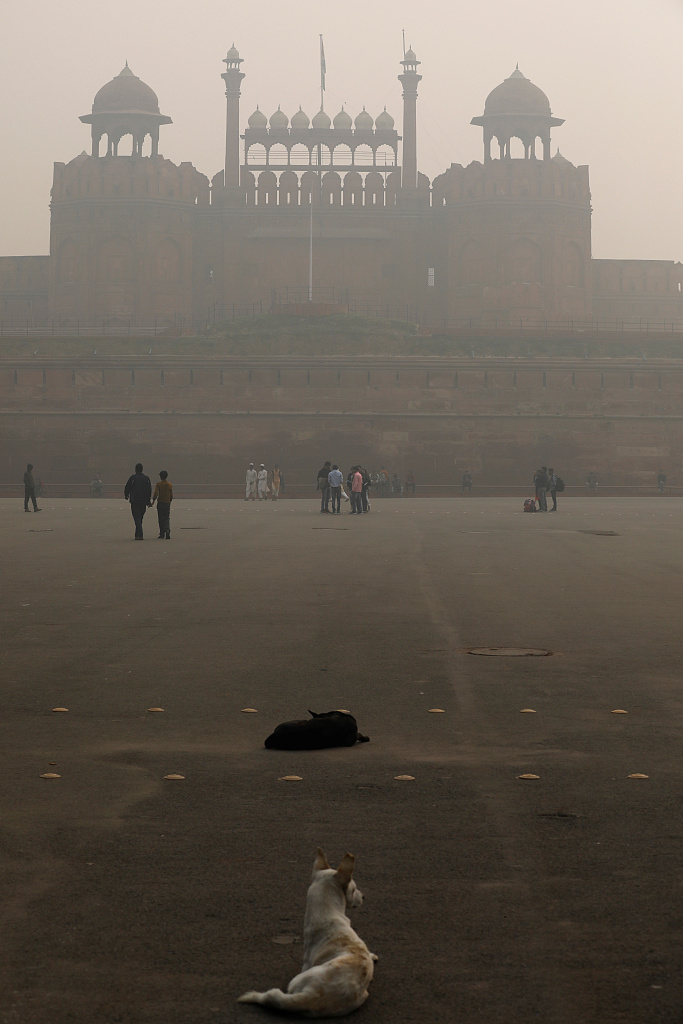
People walk outside the Red Fort on a smoggy morning in the old quarters of Delhi, India, November 15, 2019.
People walk outside the Red Fort on a smoggy morning in the old quarters of Delhi, India, November 15, 2019.
India's capital New Delhi has been enveloped in heavy, toxic smog for weeks. Every winter, the megacity of 20 million people is blanketed by a poisonous smog of car fumes, industrial emissions and smoke from stubble burning at farms in neighboring states. But this time it is the worst levels in recent years.
Concentrations of fine particles (2.5 microns or less in diameter) in the air hit the highest level of this season, according to India's state-run System of Air Quality Weather Forecasting and Research (SAFAR). It has approached 1,000 micrograms per cubic meter of air, while the recommended World Health Organization (WHO) safe daily maximum is a reading of 25. SAFAR rates the air "very poor."
According to the AirVisual website, Delhi remained the most polluted city in the world on Tuesday ahead of Kolkata in eastern India and Lahore in Pakistan.
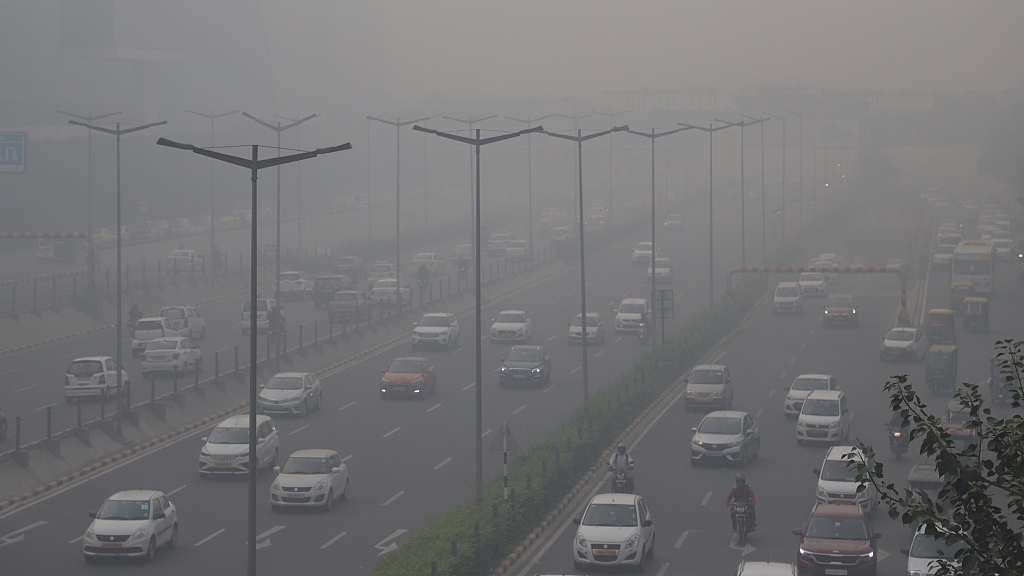
Vehicles move on a smoggy morning in Gurugram, Haryana on the outskirts of New Delhi, India, on November 15, 2019. /VCG Photo
Vehicles move on a smoggy morning in Gurugram, Haryana on the outskirts of New Delhi, India, on November 15, 2019. /VCG Photo
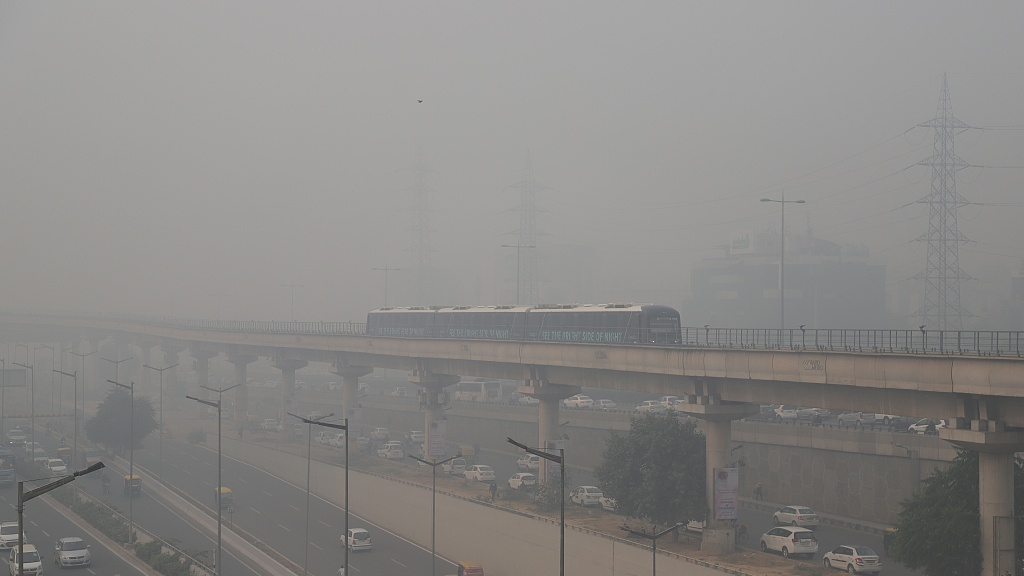
A metro train moves on a smoggy morning in Gurugram, Haryana on the outskirts of New Delhi, India, on November 15, 2019. /VCG Photo
A metro train moves on a smoggy morning in Gurugram, Haryana on the outskirts of New Delhi, India, on November 15, 2019. /VCG Photo
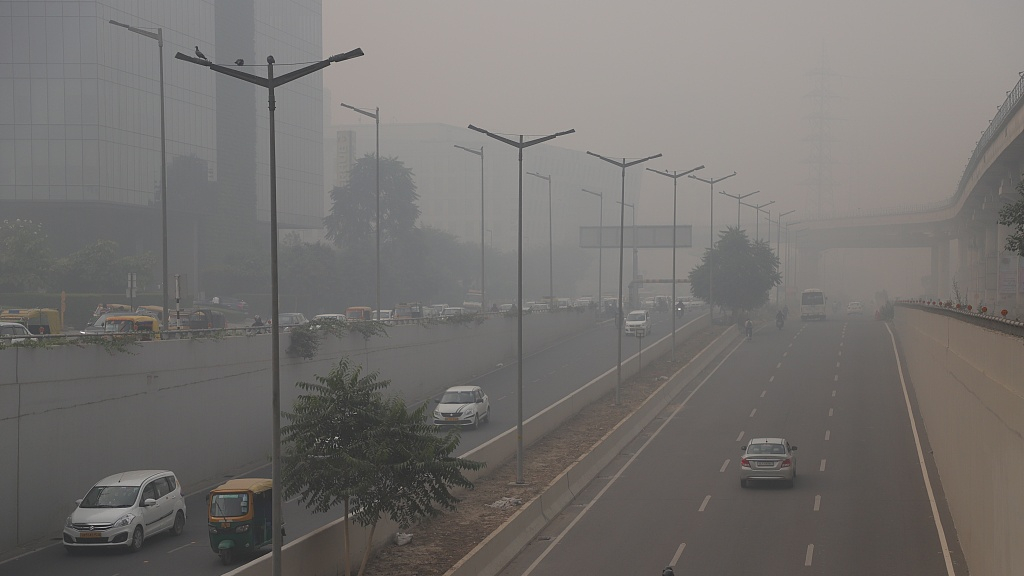
Vehicles move on a smoggy morning in Gurugram, Haryana on the outskirts of New Delhi, India, on November 15, 2019. /VCG Photo
Vehicles move on a smoggy morning in Gurugram, Haryana on the outskirts of New Delhi, India, on November 15, 2019. /VCG Photo
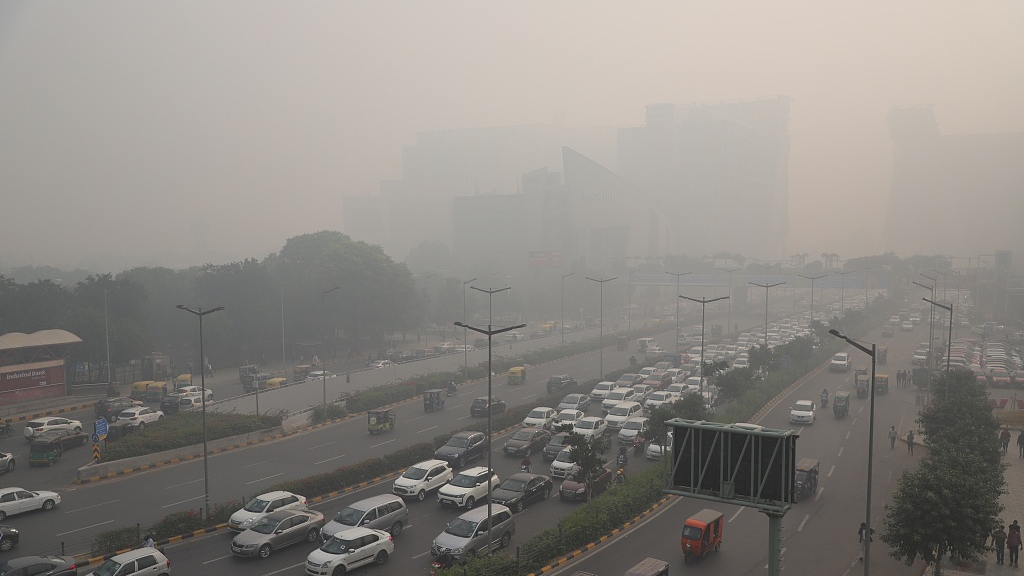
Vehicles move on a smoggy morning in Gurugram, Haryana on the outskirts of New Delhi, India, on November 15, 2019. /VCG Photo
Vehicles move on a smoggy morning in Gurugram, Haryana on the outskirts of New Delhi, India, on November 15, 2019. /VCG Photo
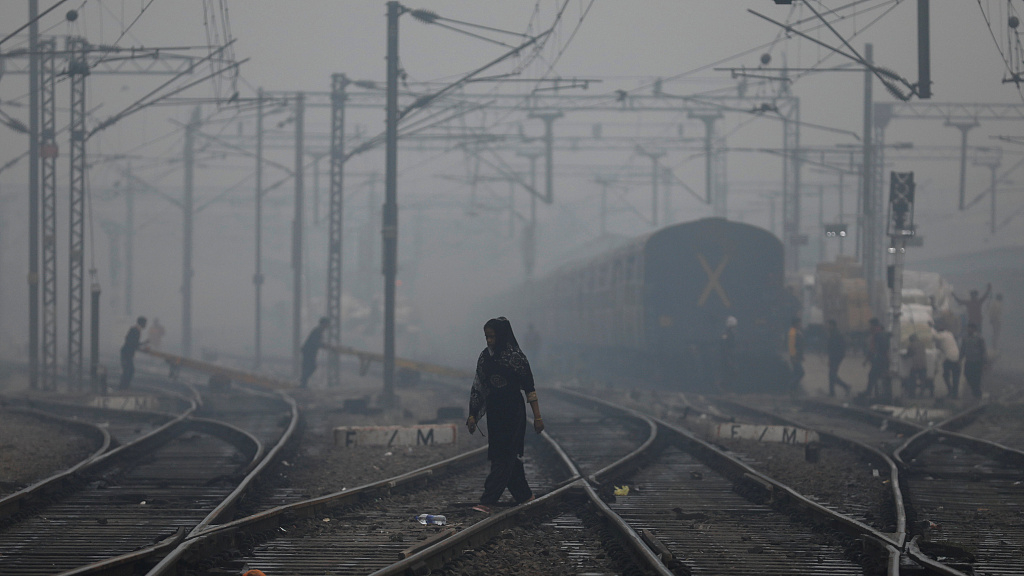
A woman crosses a railway line on a smoggy morning in New Delhi, India, on November 15, 2019. /VCG Photo
A woman crosses a railway line on a smoggy morning in New Delhi, India, on November 15, 2019. /VCG Photo
The thick gray smog choking New Delhi has added to a mounting pollution health crisis. Indian media is packed with warnings about the risk of premature death, lung cancer and particular danger to children from PM2.5 – tiny particles that get into the bloodstream and vital organs – carried in the smog. Hospitals reported a surge in patients with respiratory complaints. However, some locals still refuse to wear masks.
Pollution – blamed on industrial and car emissions mixed with stubble fires on thousands of farms surrounding the city – has been building up each winter for the past decade. The past five years have been particularly bad.
The toxic air cuts short the lives of 1 million people in India every year, according to government research published earlier this year.
Concentrations of the most harmful airborne pollutants in Delhi are regularly about 20 times the WHO safe limit. That rams home the city's reputation as the world's most polluted capital. Fourteen Indian cities including the capital are among the world's top 15 most polluted cities, according to the WHO.
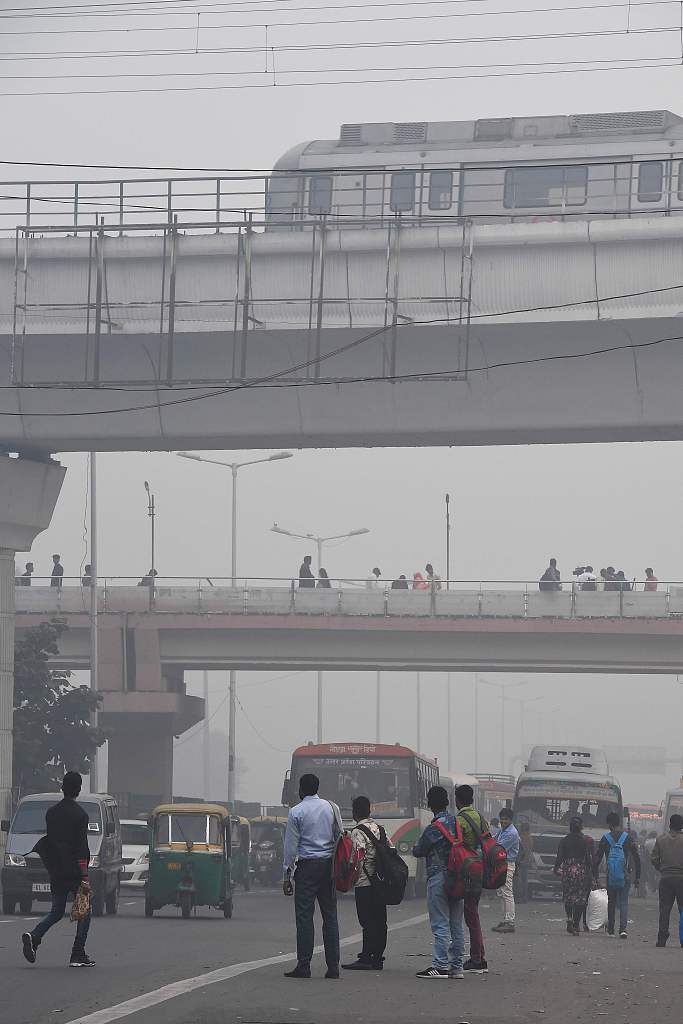
People make their way on a street in smoggy conditions in New Delhi on November 4, 2019. Millions of people in India's capital started the week on November 4 choking through "eye-burning" smog, with schools closed, cars taken off the road and construction halted. The local government ordered half of the city's private cars to be taken off the road based on an odd-even registration plate system to help reduce air pollution. /VCG Photo
People make their way on a street in smoggy conditions in New Delhi on November 4, 2019. Millions of people in India's capital started the week on November 4 choking through "eye-burning" smog, with schools closed, cars taken off the road and construction halted. The local government ordered half of the city's private cars to be taken off the road based on an odd-even registration plate system to help reduce air pollution. /VCG Photo
The Delhi government has given out hundreds of thousands of masks to children and closed schools for four of the past five days. Construction is banned and cars can only go on the roads on alternate days. Diesel-spewing trucks that rumble into Delhi each night have been stopped, except those carrying essential commodities.
Siddharth Singh, a climate policy expert, called the traffic restrictions "ineffective."
"If air pollution was solely due to the vehicular traffic, then this would be a solution. Right now it cannot be a solution because motorized private transport has a very small share in the whole pie," Singh told AFP.
Stubble burning is believed to account for nearly half the pollution.
Illegal burning of crop stubble
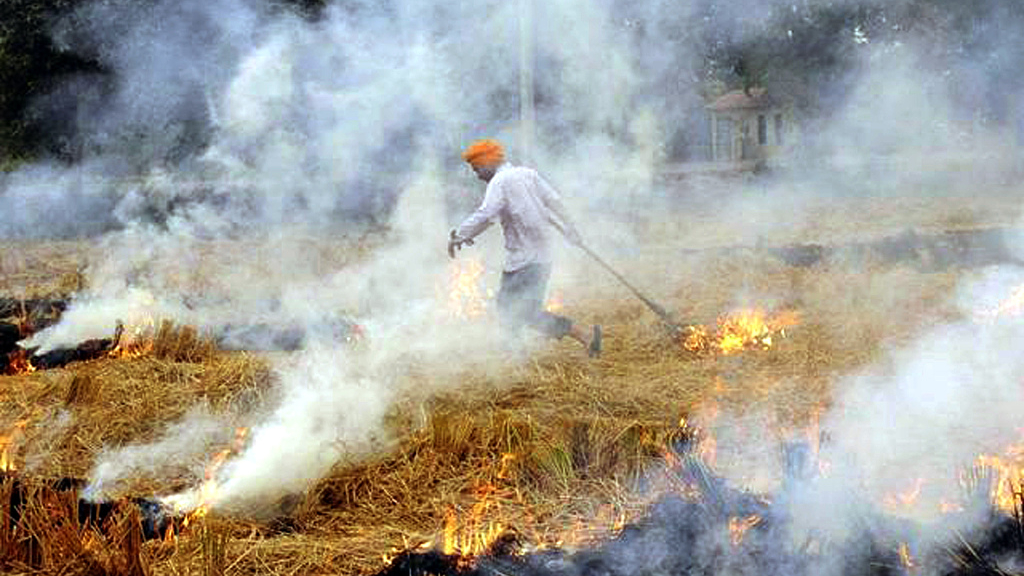
A farmer burns paddy stubble in a village near Bathinda, India, on Thursday, October 31, 2019. /VCG Photo
A farmer burns paddy stubble in a village near Bathinda, India, on Thursday, October 31, 2019. /VCG Photo
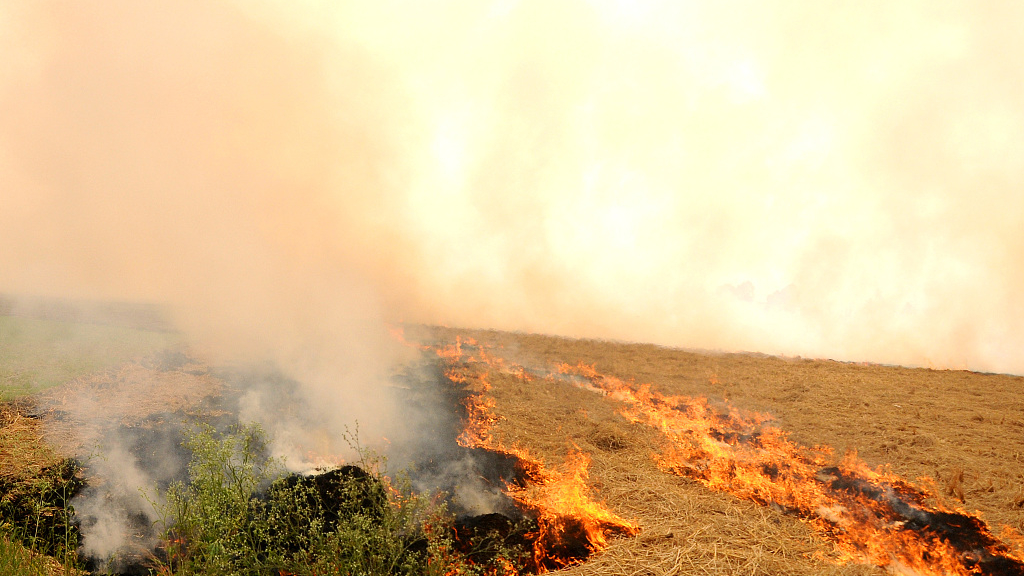
Burning stubble is seen in a village in Pehowa district, Haryana, India, on Thursday, October 31, 2019. /VCG Photo
Burning stubble is seen in a village in Pehowa district, Haryana, India, on Thursday, October 31, 2019. /VCG Photo

A farmer burns paddy stubble in Chismani village in Ganaur city on the outskirts of Sonipat, India, on October 31, 2019. /VCG Photo
A farmer burns paddy stubble in Chismani village in Ganaur city on the outskirts of Sonipat, India, on October 31, 2019. /VCG Photo
More than 80 farmers have been arrested in northern India for starting fires that contributed to the recent pollution crisis in New Delhi and other cities, officials said Thursday.
Each winter the post-harvest burning of crop stubble covers swaths of the region in toxic smog, which combines with car and factory emissions to turn Delhi into the world's most polluted capital.
India's top court this week ordered a crackdown on illegal stubble-burning, but the fires continued across Punjab and Haryana states – with many started at night to try and avoid detection.
A senior Punjab police officer said more than 17,000 farm fires had been reported in the state in the past three days, with 4,741 on Wednesday alone.
Punjab and Haryana make up a key agricultural region that produces nearly 18 million metric tons of rice each year. This, in turn, creates nearly 20 million metric tons of crop stubble – most of which is burned.
India's top court has ordered a complete halt to stubble burning around Delhi, a major contributor to lethal smog. In fact, burning stubble is already illegal, but many hard-up farmers say they have no choice.
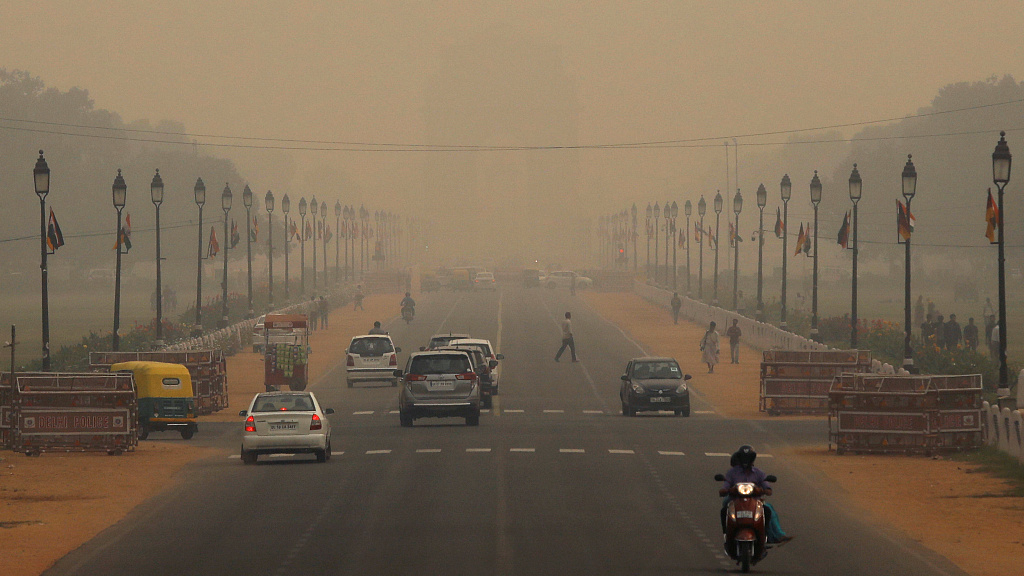
Vehicles drive through smog near India Gate in New Delhi, India, October 30, 2019. /VCG Photo
Vehicles drive through smog near India Gate in New Delhi, India, October 30, 2019. /VCG Photo

Buildings are seen shrouded in smog in New Delhi, India, October 30, 2019. /VCG Photo
Buildings are seen shrouded in smog in New Delhi, India, October 30, 2019. /VCG Photo
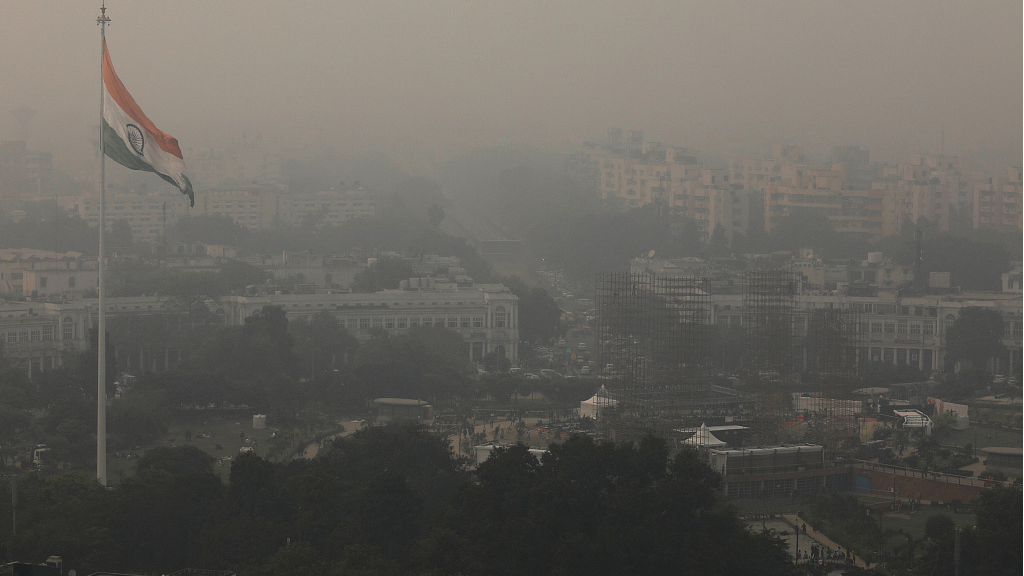
Buildings are seen shrouded in smog in New Delhi, India, October 30, 2019. /VCG Photo
Buildings are seen shrouded in smog in New Delhi, India, October 30, 2019. /VCG Photo
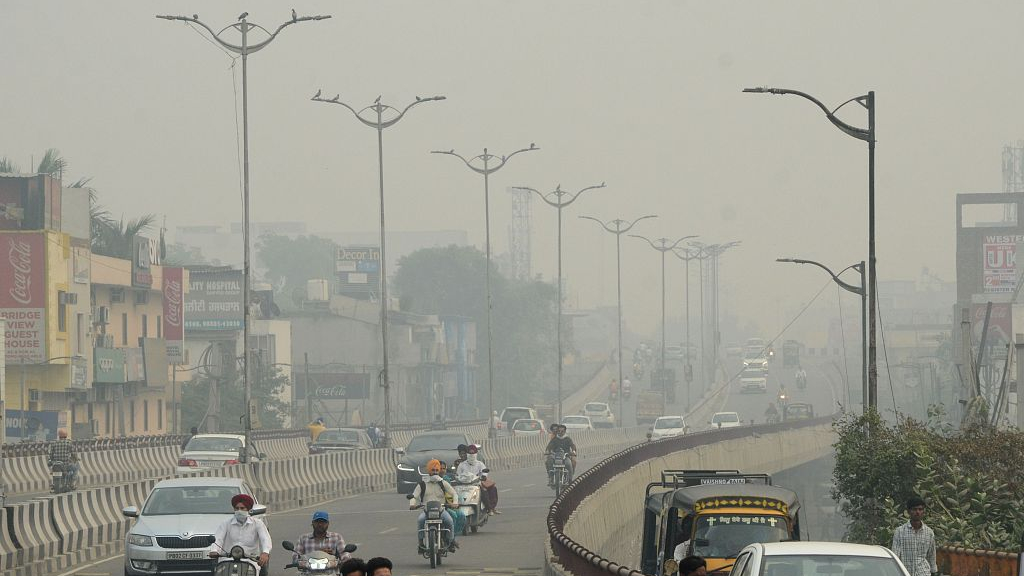
Commuters make their way under heavy smog conditions in Amritsar, India, on October 30, 2019. /VCG Photo
Commuters make their way under heavy smog conditions in Amritsar, India, on October 30, 2019. /VCG Photo
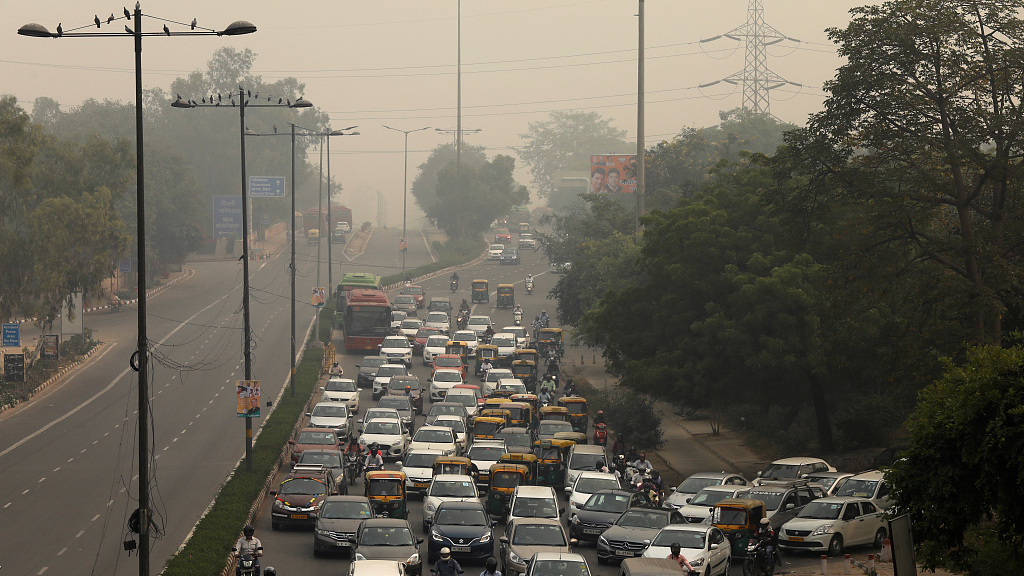
Vehicles drive through smog in New Delhi, India, October 30, 2019. /VCG Photo
Vehicles drive through smog in New Delhi, India, October 30, 2019. /VCG Photo
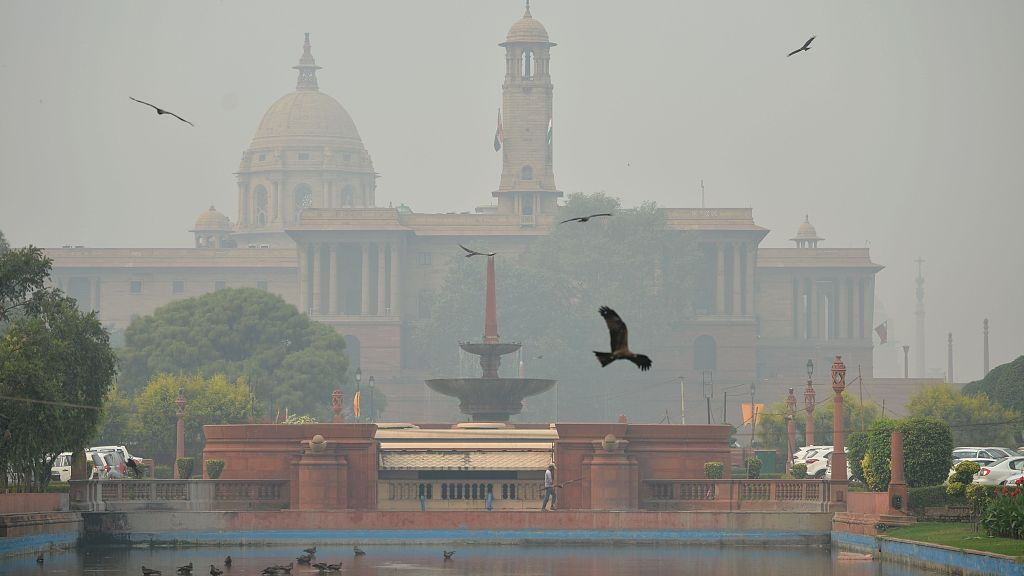
Thick air pollution is pictured around Rashtrapati Bhavan, the official residence of the president of India, and government buildings in New Delhi on October 30, 2019. /VCG Photo
Thick air pollution is pictured around Rashtrapati Bhavan, the official residence of the president of India, and government buildings in New Delhi on October 30, 2019. /VCG Photo
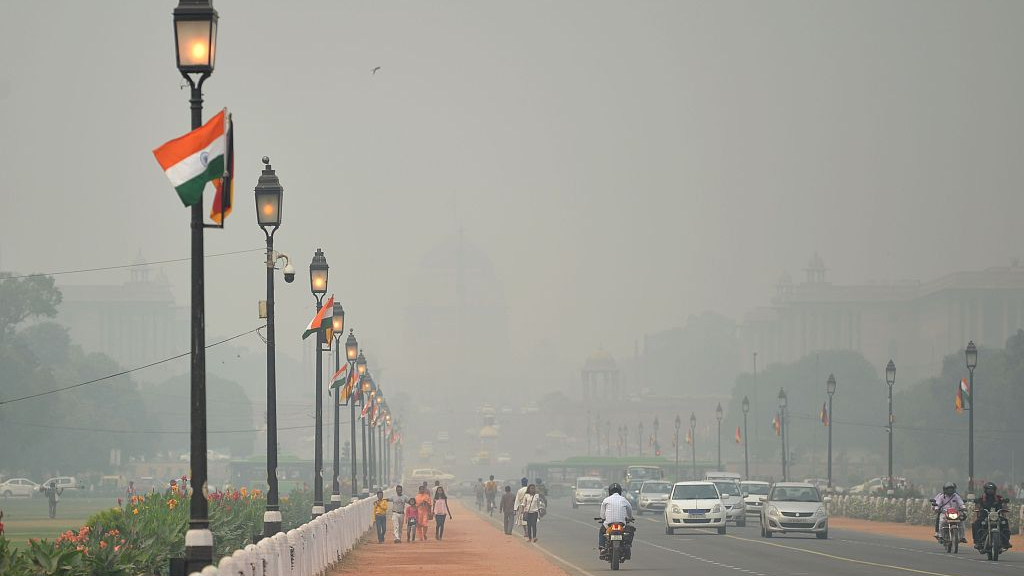
Thick air pollution obscures the view of Rashtrapati Bhavan, the official residence of the president of India, and government buildings in New Delhi on October 30, 2019. /VCG Photo
Thick air pollution obscures the view of Rashtrapati Bhavan, the official residence of the president of India, and government buildings in New Delhi on October 30, 2019. /VCG Photo
Each winter, smog hits northern India as cooler air traps the stubble smoke, car fumes, factory emissions and construction dust close to the ground, creating a noxious cocktail that burns eyes and makes breathing difficult.
New Delhi is hit each year by a near perfect storm of pollution that takes hold immediately after the Hindu festival of Diwali in late October, when millions of revelers let off firecrackers.
On top of the firework hangover, the city of 20 million people is threatened by the widespread burning of wheat and rice stubble in neighboring farmlands, along with traffic fumes, factory emissions and smoke from fires used in poor neighborhoods for heating and cooking.
Pollutants from this toxic cocktail get trapped over Delhi by cooler winter temperatures and the usually slow-moving winds that prevail at this time of year.
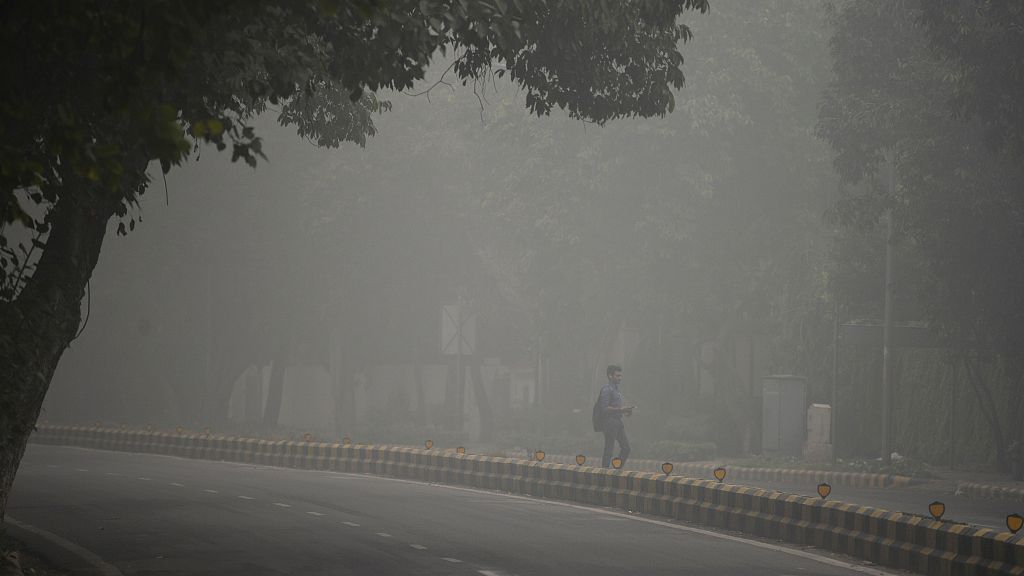
A man walks across a road under heavy smog conditions, in New Delhi on November 3, 2019. /VCG Photo
A man walks across a road under heavy smog conditions, in New Delhi on November 3, 2019. /VCG Photo
India has faced a mounting pollution crisis over the past decade. Experts warn that both state and national governments needed to go beyond short-term remedies and tackle major pollution causes if air quality is to improve in the long-term.
Stop-gap solutions "can't be a substitute for addressing the major long-term chronic sources of air pollution," Daniel Cass, senior vice president for environmental health of global non-profit Vital Strategies, told AFP.
He said emissions restrictions should be imposed on motorbikes and scooters, which are heavily used in Delhi but exempted from the odd-even scheme, and called for more public transport investment.
Changing agricultural practices, switching electricity generation sources and accelerating the conversion of home-heating from charcoal to natural gas were also key measures in the pollution fight, Cass said.
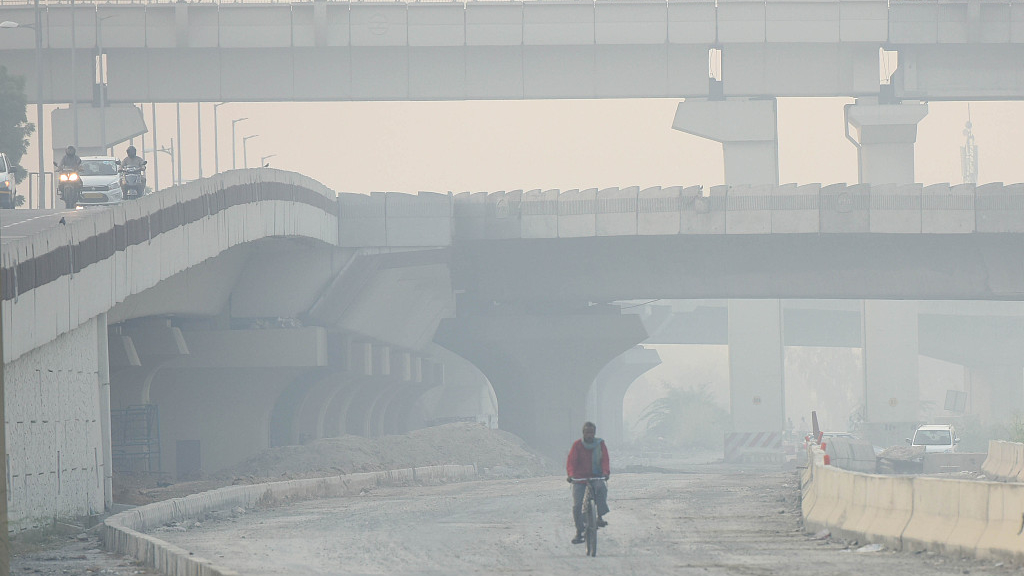
A man is seen riding a bicycle amid dense smog in Mayur Vihar in New Delhi, India, on October 24, 2019. /VCG Photo
A man is seen riding a bicycle amid dense smog in Mayur Vihar in New Delhi, India, on October 24, 2019. /VCG Photo
(Cover photo via VCG)
(If you want to contribute and have specific expertise, please contact us at nature@cgtn.com.)
Source(s): AFP